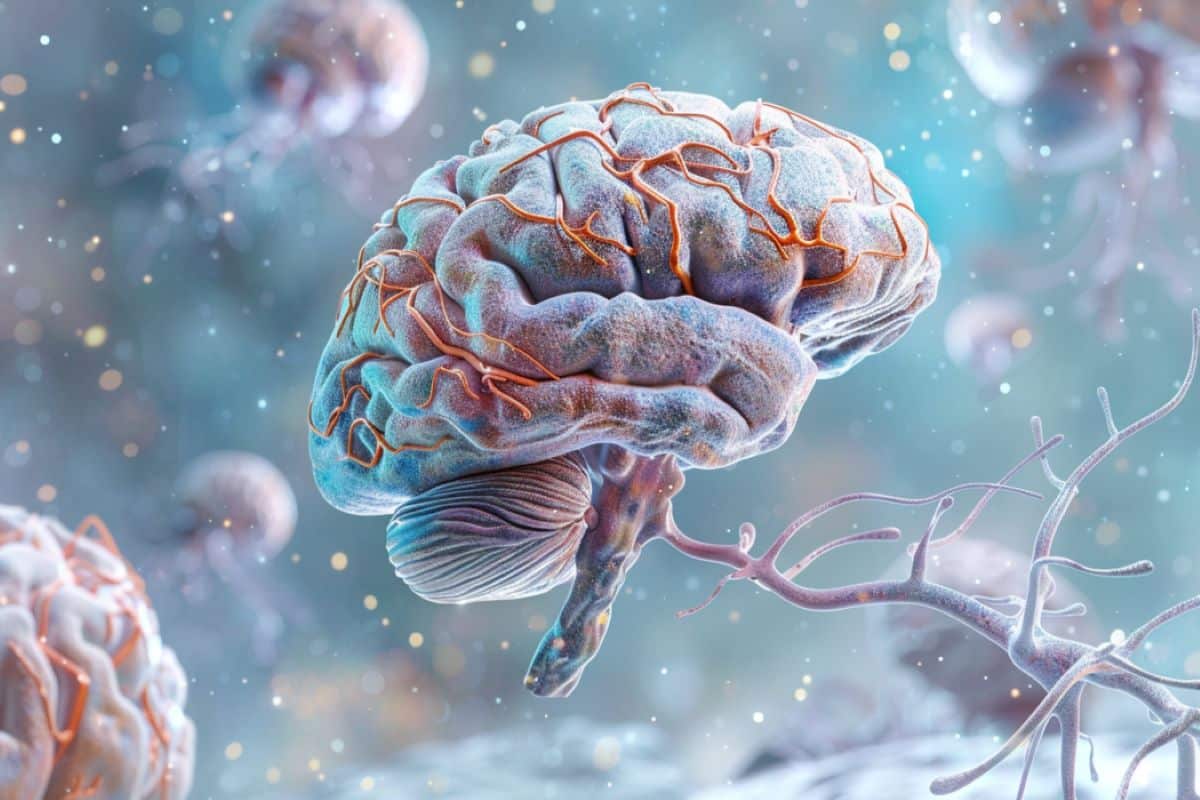Summary: A new study reveals how the protein Gephyrin contributes to synapse formation, providing new insights into brain connectivity. The findings could help develop treatments for disorders such as autism, epilepsy and schizophrenia.
The researchers used CRISPR-Cas9 to confirm the role of Gephyrin in autonomous synapse development. This breakthrough improves the understanding of synaptic mechanisms and potential therapeutic approaches.
Highlights:
- The role of Géphyrine: Essential for the autonomous formation of synapses in the brain.
- Research method: Used CRISPR-Cas9 on human neurons derived from stem cells.
- Therapeutic potential: The findings could lead to new treatments for neurological disorders.
Source: Colorado State University
Newly published research from Colorado State University answers fundamental questions about cellular connectivity in the brain that could be useful in developing treatments for neurological diseases like autism, epilepsy or schizophrenia.
The work, highlighted in the Proceedings of the National Academy of Sciences, focuses on how neurons in the brain transmit information between each other via highly specialized subcellular structures called synapses.
These delicate structures are essential for controlling many processes in the nervous system via electrochemical signaling, and pathogenic gene mutations that alter their development can cause serious mental disorders.

Despite their important role in connecting neurons across different regions of the brain, how synapses form and function is still not well understood, said Assistant Professor Soham Chanda.
To answer this fundamental question, Chanda and his team in the Department of Biochemistry and Molecular Biology focused on a specific and important type of synapse called GABAergic. He explained that neuroscience researchers have long hypothesized that these synapses might form due to a release of GABA and corresponding sensing activity between two nearby neurons.
However, the research presented in the paper now shows that these synapses can begin to grow autonomously and outside of this neuronal communication, primarily through the scaffolding action of a protein called Gephyrin. These findings clarify key mechanisms of synaptic formation, which could allow researchers to focus more on synapse dysfunction and health treatment options.
Chanda’s team used human neurons derived from stem cells to develop a model of the brain that could rigorously test these relationships. Using a gene editing tool called CRISPR-Cas9, they were able to genetically manipulate the system and confirm the role of gephyrin in the process of synapse formation.
“Our study shows that even if a pre-synaptic neuron does not release GABA, the postsynaptic neuron can still set up the necessary molecular machineries, primed to detect GABA,” Chanda said.
“We used a gene-editing tool to remove the Gephyrin protein from neurons, which largely reduced this autonomous assembly of synapses, confirming its important role in all neuronal communication.”
Using stem cells to advance understanding of neuron and synapse formation
Neuroscientists have traditionally used rodent systems to study these synaptic connections in the brain. While this provides a suitable model, Chanda and his team wanted to test the properties of synapses in a human cellular environment that could potentially be more easily translated into treatments.
To achieve this, his team cultivated human stem cells to form brain cells capable of mimicking the properties of human neurons and synapses. They then performed in-depth, high-resolution imaging of these neurons and monitored their electrical activities to understand the synaptic mechanisms.
Chanda said several mutations in the Gephyrin protein have been associated with neurological disorders like epilepsy, which impairs neuronal excitability in the human brain. Understanding its basic cellular function is therefore an important first step towards treatment and prevention.
“Now that we better understand how these synaptic structures interact and organize themselves, the next question will be to elucidate how defects in their relationships can lead to disease and to identify ways in which we can predict or intervene in this process.” , did he declare.
About this research news in genetics and neurology
Author: Joshua Rhoten
Source: Colorado State University
Contact: Joshua Rhoten – Colorado State University
Picture: Image is credited to Neuroscience News
Original research: Closed access.
“Gephyrin promotes autonomous assembly and synaptic localization of GABAergic postsynaptic components without presynaptic GABA release” by Soham Chanda et al. PNAS
Abstract
Gephyrin promotes autonomous assembly and synaptic localization of GABAergic postsynaptic components without presynaptic GABA release
Synapses containing γ-aminobutyric acid (GABA) constitute the main centers of inhibitory neurotransmission in our nervous system. It is not clear how these synaptic structures form and align their postsynaptic machineries with presynaptic terminals.
Here, we monitored the cellular distribution of several postsynaptic GABAergic proteins in a purely glutamatergic neuronal culture derived from human stem cells, which is virtually devoid of any vesicular release of GABA.
We found that several GABAA receptor (GABAAR), postsynaptic scaffolds and key cell adhesion molecules can coaggregate and localize reliably, even in GABA-deficient subsynaptic domains, but remain physically separated from their glutamatergic counterparts.
Genetic deletions of gephyrin and a gephyrin-associated guanosine di- or triphosphate (GDP/GTP) exchange factor, collybistin, severely disrupted the coassembly of these postsynaptic compositions and their correct apposition with presynaptic inputs. .
Gephyrin-GABAAR clusters, developed in the absence of GABA transmission, could then be activated and even potentiated by a delayed supply of vesicular GABA. Thus, the molecular organization of GABAergic postsynapses may be initiated via an intrinsic GABA-independent but gephyrin-dependent mechanism.